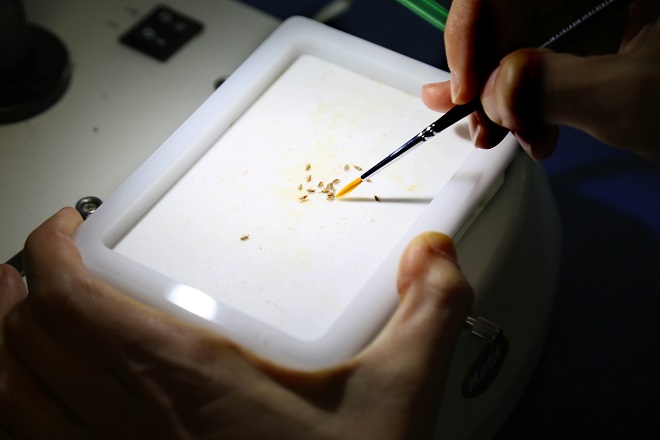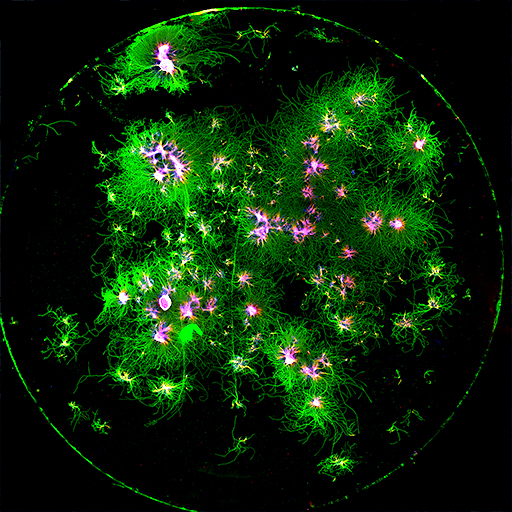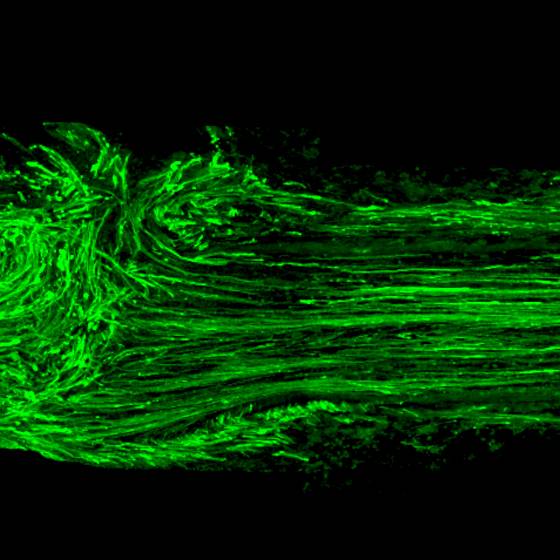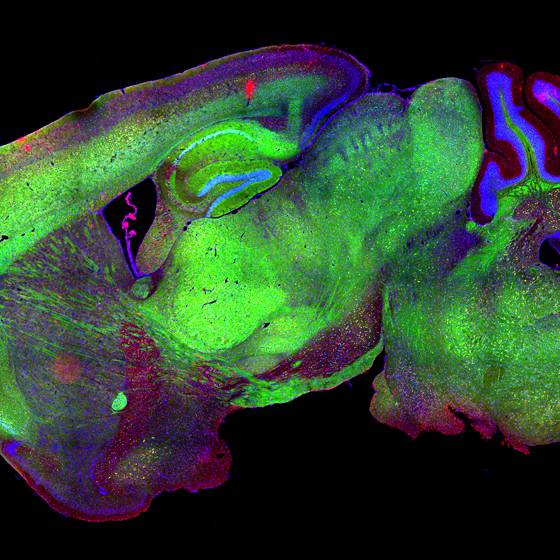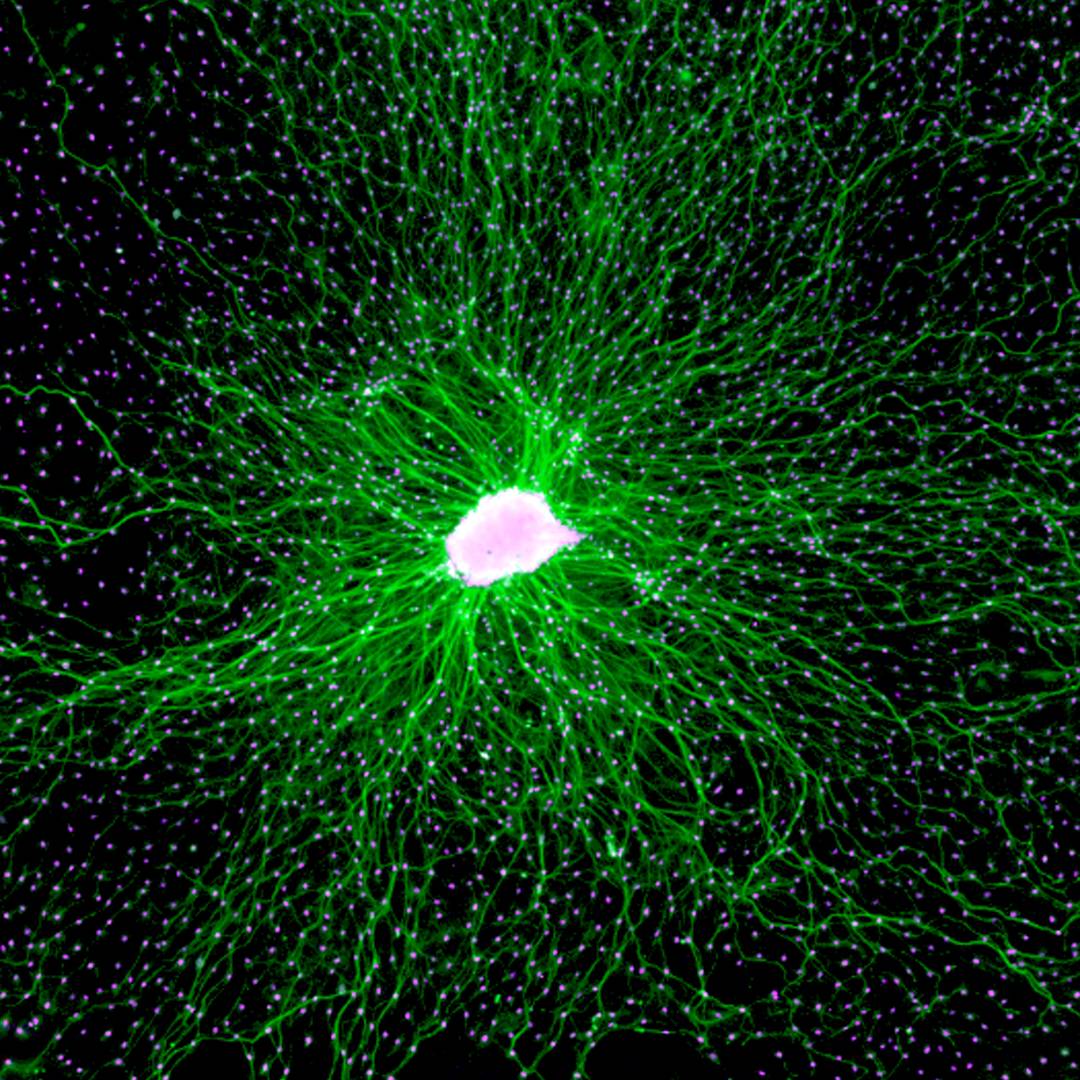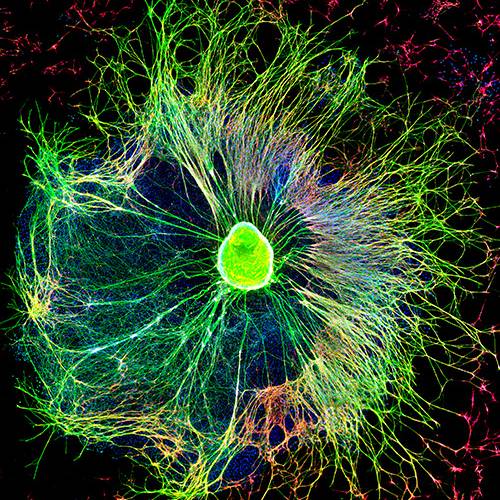Axonal Degeneration as a target for neuroprotection
Destruction programs are cellular mechanisms that have survival value when they operate under physiological control, but their malfunction could be deleterious for the organism. Apoptosis, or programmed cell death, is a well-known physiological destruction mechanism most apparent during development but persisting throughout the organism’s life. Other destruction programs are emerging as physiological processes that may not terminate in the destruction of the whole cell but only of restricted cellular domains. In the case of neurons, pruning of exuberant branches of terminal arborizations and degeneration of axons severed from their cell bodies are outstanding examples. Importantly, axonal degeneration is an early event in neurodegenerative condition including Alzheimer´s and Parkinson disease, as well as peripheral neuropathies. We are interested to define molecular players in the process of axonal degeneration to find therapeutic targets for neuroprotection.
Golgi staining of a mouse hippocampal section, with this technique, sparse neuronal labelling is obtained, which allows detailed analysis of individual neurons.

The degeneration of axons constitutes a salient feature shared by several neurodegenerative diseases that contributes to neuronal dysfunction and cell death. To date, the precise molecular and cellular mechanisms of axonal degeneration are under intense investigation. The morphological evidence indicates that axon degeneration as a consequence of aging and neurodegenerative diseases takes place in a retrograde fashion also known as dying back degeneration, which precedes cell death of the neuronal soma. Axon degeneration shares several characteristics with cell death by activation of the necroptotic signaling pathway, including mitochondrial dysfunction, ROS production, and intracellular calcium increase, and we have found that necroptosis inhibition by genetic or pharmacological means delays axonal degeneration in neurons from the peripheral and central nervous systems, as well as in model of Alzheimer´s and Parkinson Disease.
People involved
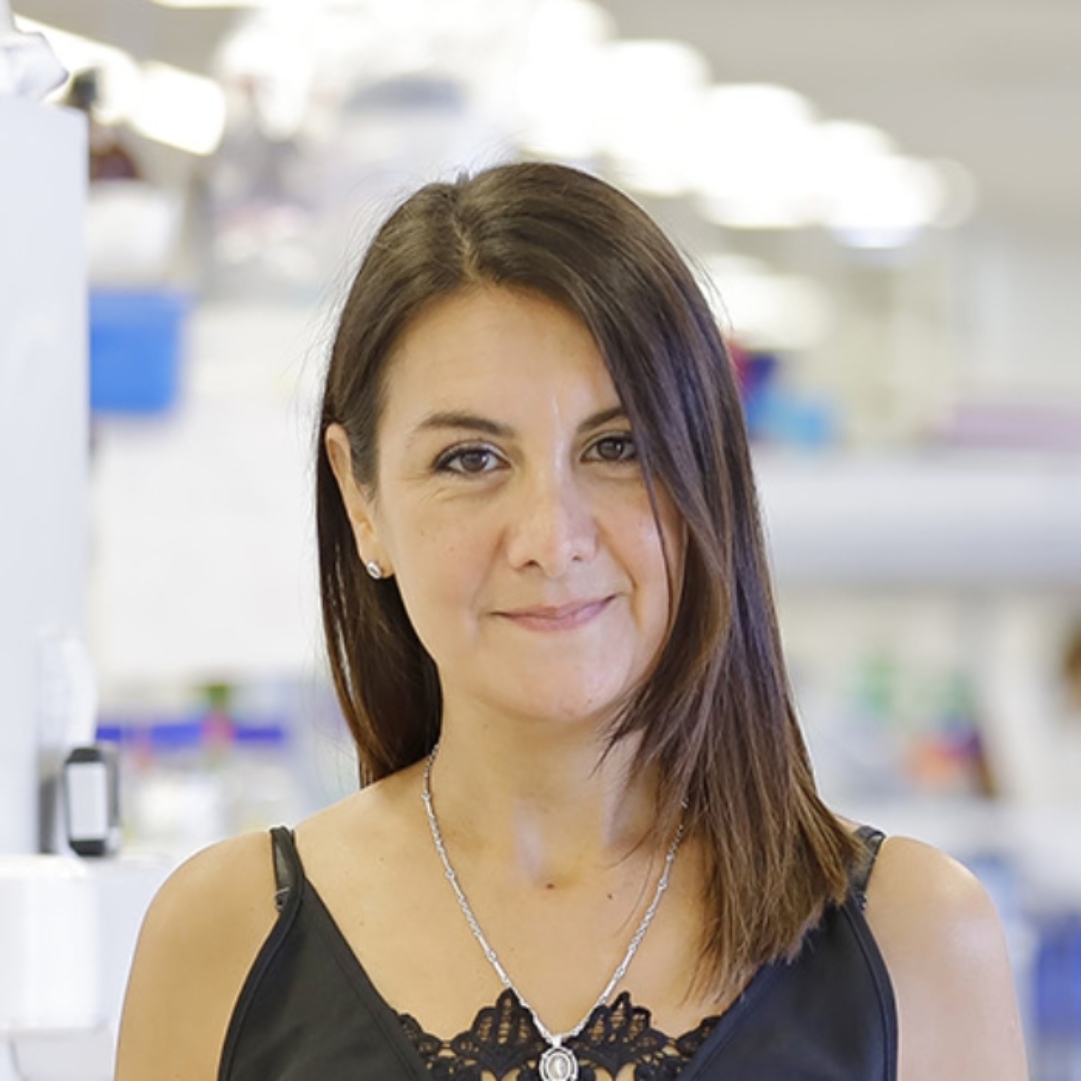
Macarena Arrazola
PI collaborator

PhD in Biological Sciences from the Catholic University of Chile. Studying the contribution of necroptosis in the age-associated axonal degeneration of the hippocampus, and the impact of using pharmacological approaches to revert neuronal dysfunction and cognitive impairment during aging, proposing necroptosis as an attractive target for the future development of geroprotective tools to treat age-related disabilities.

Daniela Rebolledo
Senior Research Assitant

BI am a Biochemist from Pontificia Universidad Católica de Chile (PUC) and PhD in Cell and Molecular Biology from the same university. My PhD thesis research was performed at the Physiology and Biophysics department, University of Washington. My research has focused on the physiology of the neuromuscular system and the pathological mechanisms behind neuromuscular disorders of diverse etiology.

Genesis Vega
Postdoctoral fellow

Bachelor’s degree in Biochemistry at the Universidad Austral de Chile. PhD in Sciences with mention in cellular and molecular biology at the Universidad Austral de Chile carried out at CECs and University of Heidelberg. Studying the role of NAD+ imbalance in the activation of necrosome and dysfunction of mitochondrial metabolism in chemotherapy-induced axonal degeneration in aged peripheral neurons.

Rodrigo Leiva
Research Assitant

B.Sc(hons) degree in Neuroscience from the University of Glasgow and M.Sc in Integrative Neuroscience from the University of Edinburgh. I’m currently working on the role of axonal necroptosis and inflammation in the dopaminergic neurons of the nigrostriatal pathway in Parkinson’s Disease to assess it as a potential therapeutic target through the inhibition of RIPK3.
Related Publications
PUBLICATIONSDataNervous System FxPNS
septiembre 30, 2021
Restricted growth of Schwann cells lacking Cajal bands slows conduction in myelinated nerves.
Court FA, Sherman DL, Pratt T, Garry EM, Ribchester RR, Cottrell DF, Fleetwood-Walker SM, Brophy PJ.
Nature 2004 Sep 9;431(7005):191–5 doi:10.1038/nature02841.
PMID: 15356632
PUBLICATIONSDataPNSNeuroDegeneration
septiembre 30, 2021
Neurons expressing the highest levels of gamma-synuclein are unaffected by targeted inactivation of the gene.
Ninkina N, Papachroni K, Robertson DC, Schmidt O, Delaney L, O'Neill F, Court F, Rosenthal A, Fleetwood-Walker SM, Davies AM, Buchman VL.
Mol Cell Biol. 2003 Nov;23(22):8233-45. doi: 10.1128/MCB.23.22.8233-8245.2003.
PMID: 14585981
PUBLICATIONSDataPNSNeuroDegeneration
septiembre 30, 2021
Wallerian degeneration of injured axons and synapses is delayed by a Ube4b/Nmnat chimeric gene.
Mack TG, Reiner M, Beirowski B, Mi W, Emanuelli M, Wagner D, Thomson D, Gillingwater T, Court F, Conforti L, Fernando FS, Tarlton A, Andressen C, Addicks K, Magni G, Ribchester RR, Perry VH, Coleman MP.
Nat Neurosci. 2001 Dec;4(12):1199-206. doi: 10.1038/nn770.
PMID: 11770485
PUBLICATIONSDataPNSNeuroRegeneration
septiembre 30, 2021
Nerve regeneration in Wld(s) mice is normalized by actinomycin D.
Court F, Alvarez J.
Brain Res. 2000 Jun 9;867(1-2):1-8. doi: 10.1016/s0006-8993(00)02140-5.
PMID: 10837792
Related News
La batalla contra el envejecimiento: Investigador U. Mayor logró extender un 20% la vida de las moscas
octubre 14, 2021
Aplicando cambios genéticos y alimentarios, el Dr. Felipe Court consiguió este avance científico, que es el primer paso para aplicar dichas técnicas en otros seres vivos y finalmente el ser humano.…
CIB y Centro de Nanotecnología se unen para desarrollar investigación conjunta
octubre 14, 2021
Académicos tuvieron primera reunión de coordinación, con el objetivo de conocer sus proyectos actuales y proyectar temas interdisciplinarios Fuente: CIB UMayor…
